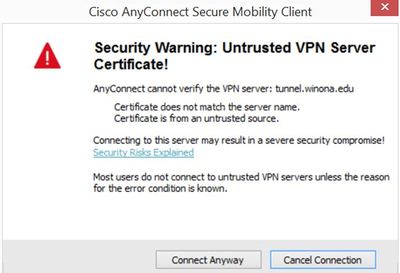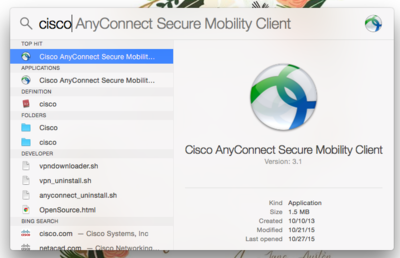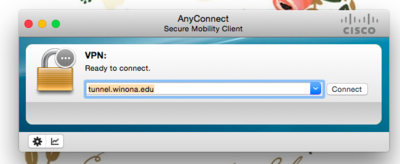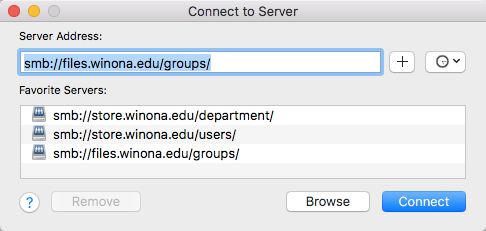VPN
What is VPN?
VPN stands for Virtual Private Network. Cisco AnyConnect VPN is pre-installed on your WSU laptop and can be used to connect to the WSU network when you are off-campus. This software is available to both Students and Employees.
WSU's VPN differs from commercial VPN solutions such as NordVPN, ExpressVPN, and Private Internet Access VPN in that it does not offer advanced internet security or privacy for everyday browsing. WSU's VPN solution simply ensures a dedicated, secured, encrypted connection to the WSU network for access to work-based or class-based resources (such as network storage drives).
For that reason, it is unnecessary to leave WSU VPN connected at all times unless you're actively performing work or class tasks while off campus.
About Cisco AnyConnect VPN
Using the Cisco AnyConnect VPN client software, you can connect a WSU laptop to the WSU network from off-campus. The data sent over our VPN is encrypted to preserve security. This connection enables the same network access you have while on-campus. This includes:
- Certain WSU-specific web applications that may not work off-campus.
- Network storage drives (e.g., personal storage, class storage, departmental storage, "R drive," or "S drive" etc.)
Using Cisco AnyConnect VPN
The Cisco AnyConnect VPN software is pre-installed on your WSU laptop. VPN is not usually necessary on desktop computers that live on campus in offices. If your WSU desktop computer is unable to access specific network resources, please contact WSU Tech Support.
NOTE: If you see this error while trying to connect, click on "Connect anyway".
Windows 10
- Open the start menu and type Cisco
- Select 'Cisco AnyConnect Secure Mobility Client' when it appears
- If it does not appear, open your internet browser and go to https://tunnel.winona.edu
- You will be prompted to Connect and login to WSU with your StarID and password.
macOS
- Click on Spotlight in the upper right corner
- Type in "Cisco"
- Select "Cisco AnyConnect Secure Mobility Client"
- Connect to Tunnel.winona.edu
- Use your StarID and password when prompted to login
Map Network Drives
Mapping network storage for Employees
Windows 10
You will need to manually map your Personal Network Storage also referred to as R: drive.
- Open File Explorer from the Taskbar
- Use the drop down arrow in the top menu for 'Map network drive' and select Map network drive
- Type the following in Folder: \\store\users\(your StarID)
- Select 'Reconnect at sign-in'
- Finish
macOS
- Use the Finder
- Go
- Connect to Server
- Server address for Employees to get to personal storage: smb://store.winona.edu/users/yourStarIDhere
- Server address for Employees to get to department drive: smb://store.winona.edu/department
Map Network Drives (Continued)
If you want to connect to Personal Network or Department Network drives from off-campus, you will need to connect to VPN before you can use the network drives.
Windows 10
- Open the Start Menu then select the Map Network Drives shortcut.
- A black window will appear and map your drives. Do not close this window.
- Double-click 'This PC' on your desktop to access your network drives (See Fig 1.)
- Do not disconnect VPN or WiFi during use. Network access is required to maintain the VPN connection.
macOS
- In Finder, hold down <CommandKey> then hit the <K> key to bring up "Connect to Server"
- Mac users connect to one of the network locations listed in Fig 2.



